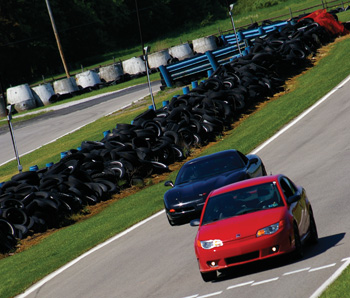 Are there any opportunities for engine specialists in grassroots road racing? The answer depends on what is being raced.
Are there any opportunities for engine specialists in grassroots road racing? The answer depends on what is being raced.
For the most part, track day cars and spec classes are going to offer only a few opportunities for engine builders and technicians, but there is a bright side in that you may get to do work for these racers after they step up to another class or want to modify their engines to something more than stock.
It doesn’t hurt to plant the seeds of performance in these racers early.
There are some basic differences to building an engine for road racing applications versus for circle track or drag racing. Probably the biggest difference, of course, is the fact that the vehicle turns both right and left, and at varying speeds throughout just one lap.
To set up a car for road racing means finding the best compromise. There is no perfect solution because the corners are all different, and to set up for just one of up to possibly 17 turns would not be a winning strategy.
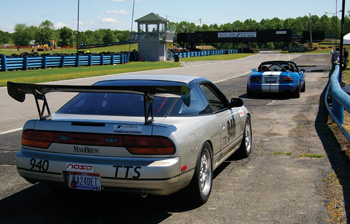
Head of the Class
In road racing, there are many classes, if not more, than in any other form of motorsports. You can count on a regional weekend to provide several groups of Improved Touring, GT and production-based classes along with a fair share of purpose-built race cars such as Formula Fords, Continentals and Sportsracers among others.
Engine builders may have the most opportunity to show their skills in the higher-end classes where horsepower is a premium or the specialized spec engine classes where the finer points make the difference between first and mid-pack. It is difficult to build for everything road racing has to offer, so you should specialize in a class where you may have a few customers or friends already or where there’s an interest to begin with.
One of the troubling trends in road racing, and racing at the grassroots level in general, is that many of the new classes are spec classes with either very limited engine mods or, essentially, none. 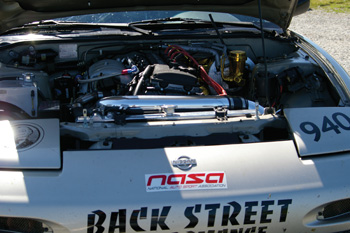
This is not a good sign for engine builders who want to be involved in road racing, or any other motorsports division where there are so many limitations. In the last several years, classes such as Spec Miata, E30 Challenge (BMW), Spec Ford Focus, Spec Racer, and many of the open wheel formula classes have gone to spec rules where everything is the same and modifications in the engine and chassis are very minor.
As a future engine builder with a reputation on the line, you will need to be careful when you’re building an engine for a spec class. Like most types of racing, there are cheaters who try to get away with bending the rules, but they are caught eventually or are just not fast enough to make a difference.
If a customer wants you to purposely bend the rules, you have to make a decision about which side of that line you want to be on. You also need to have a copy of a rule book so you know just what the rules are. The racer may get thrown out for cheating with an illegal engine, but your name will be all over it as well.
Of course, “interpreting” the rules is another story. If you interpret the rules to find grey areas that you try to exploit for your racers, that is just racing and not illegal until someone declares it so. There is a fine line, however, between the two.
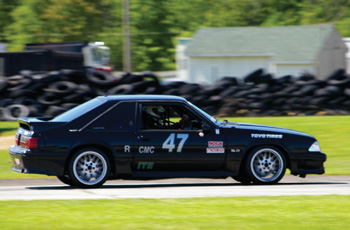
Did You Know…
According to experts, if a class is stock, there really isn’t much you can do in an engine build other than to build it to stock specifications, but you can optimize things as much as possible through balancing and blueprinting, so long as you don’t remove too much material. Despite the restrictions, these engines are being built in good numbers.
Getting into the Club
The Sports Car Club of America (SCCA) is one of the oldest racing organizations, founded in 1944, with more than 60,000 members located in 109 regions.
The Florida Region’s membership alone is 1,700-plus, with enthusiasts each having a keen interest in all things automotive. While only a small percentage of members actually race, they make up for it in enthusiasm and in the amount of money spent on racing year after year.
SCCA has more than 8,000 licensed racers who participate in more than 2,000 events. The organization is divided among several divisions (Club Racing, Pro Racing, Rally and Solo Autocross) and regions. However, the heart of the SCCA is its amateur Club Racing program, which hosts 235 local events and 65 National events each year.
The National Auto Sport Association (NASA) is a fairly new organization compared to SCCA, and it offers racers unique opportunities to become involved in nearly all forms of racing with an emphasis on welcoming new participants to the sport and creating programs that focus on the current trends in the automotive aftermarket industry. 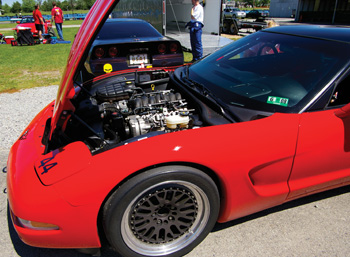
NASA has programs to accommodate everyone from complete beginners to seasoned professionals. NASA has 12,000 members with about 2,500 racers who compete in more than 200 events across the country, 120 of which are road course events.
NASA has created programs that allow owners of both race cars and high-performance street-driven vehicles to enjoy the full performance capabilities of their cars in a safe and controlled environment. NASA racers compete on a number of different levels, including its High Performance Driving Events (HPDE), Rally Sport, Time Trial, NASA-X and Competition Racing programs.
Production Classes
Road racing is one of the only forms of motorsports that can offer something for everyone. For engine builders who want to test the waters in a road racing environment, rebuilding late model production engines for showroom stock and production classes is a logical choice. Most of the cars are just like you’d buy them from the showroom floor with the exception of the addition of roll cages and minor safety and performance modifications. Engine modifications allowed are very limited, although you’re allowed to remove the muffler and catalytic converter.
Production-based race cars retain many stock components, however, rules allow for high performance modifications to enhance the safety, power and handling of the car. Production class cars are prepared to meet one of two levels of preparation: Level 1 Full Prep and Level 2 Limited Prep. The normal criteria for classifying a production car are: engine size and configuration, horsepower potential, driveline components, brakes, car weight, suspension configuration, wheels and body style. 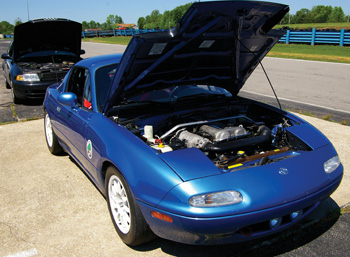
Racing organizations can alter rules to equalize the competition potential of each car in its modified form.
If you’re into the exotics, road racing has that in spades. There are a variety of engines that are regularly road raced and competing in classes that are designed to showcase them. Some of these include Porsches, Mini Coopers, MGs and Austin Healy. As you see, many of the British marques are represented in SCCA’s production classes.
However, some of the classes in SCCA are going through a transitional period right now, because there used to be many rotary engines and older Ford 2.0L engines that are now being replaced, for the most part, with more modern engines and cars.
The Spec Miata (SM) class is one of the most popular in both SCCA and NASA mainly because it is inexpensive to run and the cars are great fun to drive. The class requires a stock engine and spec suspension components, thus keeping the cost to build a competitive car low as well. Miatas from 1990-1999 are eligible for the class, although the 1.8L cars have to run a restrictor plate plate at the throttle body as well as weigh more in order to level the playing field.
The cars with 1.6L engines can be a little lighter at 2,300 lbs., while the 1.8L car must weigh 2,400 lbs. Balancing and lightening of engine parts is not allowed. The stock downpipe must be used, however the rest of the exhaust is open.
In many production classes, modifications, such as cylinder head porting and even timing changes, are not permitted. Though some racers feel that cheating has become a problem in some classes like Spec Miata, professional racing engine builders should be aware of the rules for each class.
Your reputation is a big part of how you will gain customers in any type of racing environment, so you can’t afford to be known as a cheater engine builder. If you make your living from racing engines, you know that cheating isn’t worth risking your livelihood.
NASA’s American Iron Series began with three cars competing on the West Coast and has now grown to include five regions with more than 150 cars competing in the American Iron (AI), American Iron Extreme (AIX), and Camaro Mustang Challenge (CMC) classes.
CMC features 1979-present Mustangs and 1982-2002 Camaros and Firebirds with stock engines along with “spec” springs, shocks, tires and brakes in two classes based on the year of the vehicle. The AI class is a step up from CMC with many more modifications allowed, but is still cost controlled with power-to-weight and torque-to-weight ratios, a tire limitation, and other restrictions placed on the cars.
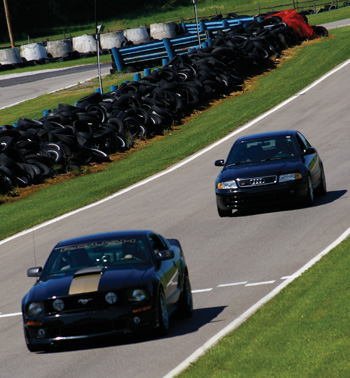
For racers who wish to race in a less restricted format, AIX is a “sky’s the limit” class, where nearly anything short of a tube frame is legal. The series offers racers a fair and friendly environment to race their muscle cars. All three classes meet each September to compete for a national crown at the NASA National Championships.
The American Iron class has a limit of 9.5:1 pounds per wheel horsepower and other restrictions to control costs. American Iron Extreme allows nearly unlimited modifications and is the playground for the big horsepower monsters. AI rules state that non-OEM aluminum blocks are not allowed, but can be run in AIX class.
Also, dry sumps are prohibited in AI, and all AI cars are required to get dyno certified in order to verify the power-to-weight rule. Any time you make a modification to the engine, you must re-certify the car.
American Iron’s basic concept is to allow aftermarket manufacturers a place to show off their products. Engine builders may find this class one of the most appealing because it allows a lot of creativity and a chance, as well, to show off your skills.
SCCA’s American Sedan (A/S) is similar to NASA’s CMC/AI class and is expected to bring back the glory days of what the old Trans Am series was in the late ’60s. The series does not allow for many aftermarket modifications thus making competition close. American Sedans include Camaros, Firebirds, Mustangs and Mercury Capris that are production-based chassis with modified suspension and brakes.
Engines are carbureted 5.0L V8s that can be balanced and blueprinted. A/S is more restrictive than American Iron, but is still a popular class that allows engine builders to show their skill in building engines that they have a lot of familiarity with.
One of the oldest classes in road racing is Formula Vee. It is based on Volkswagen’s 1200 cc engine. The class and engines have evolved over the years to some degree, but rules have remained nearly the same since its inception in the mid-1960s. In fact, it still uses the original Solex 28 PCI carburetor.
Experts say there are a lot of tricks and subtleties that engine builders use to make a 40-plus year old originally 40 hp engine work the way it does today. You are taking virtually the same parts that were originally designed to make between 36-40 hp at maybe 3,500 rpm and making them crank out 65 hp turning 7,000 rpm. The secret, say experts, is that it was a good design to begin with, and starting from a solid base has allowed engine builders to evolve this engine many times over.
To get involved in road racing, start by visiting a local track or club event. There are local tracks and car clubs that run track days all over the country and many are in need of engine experts. While it is true that some of the classes are very limited in the engine modification area, these racers will pay a premium for any small gain they can get.


